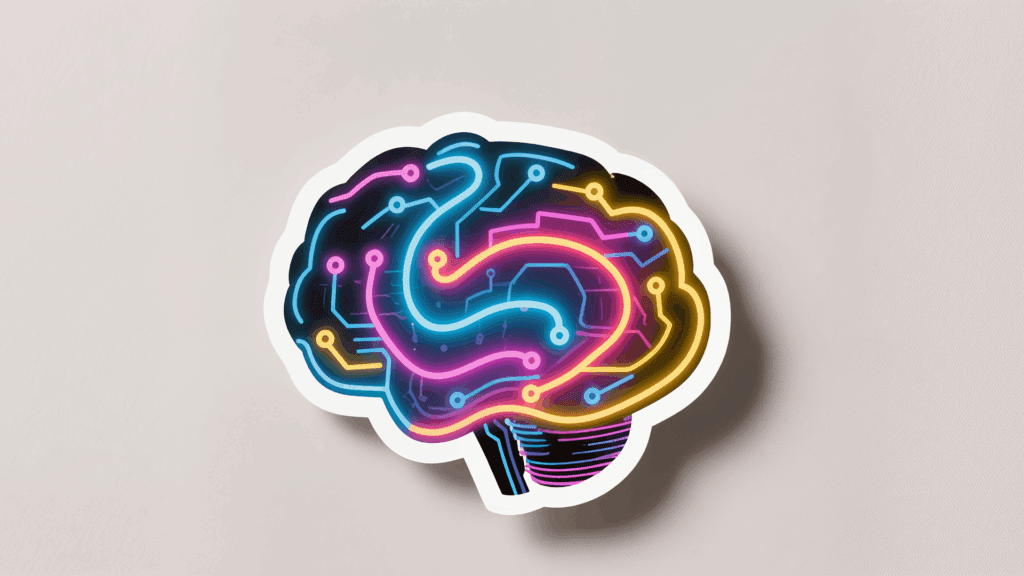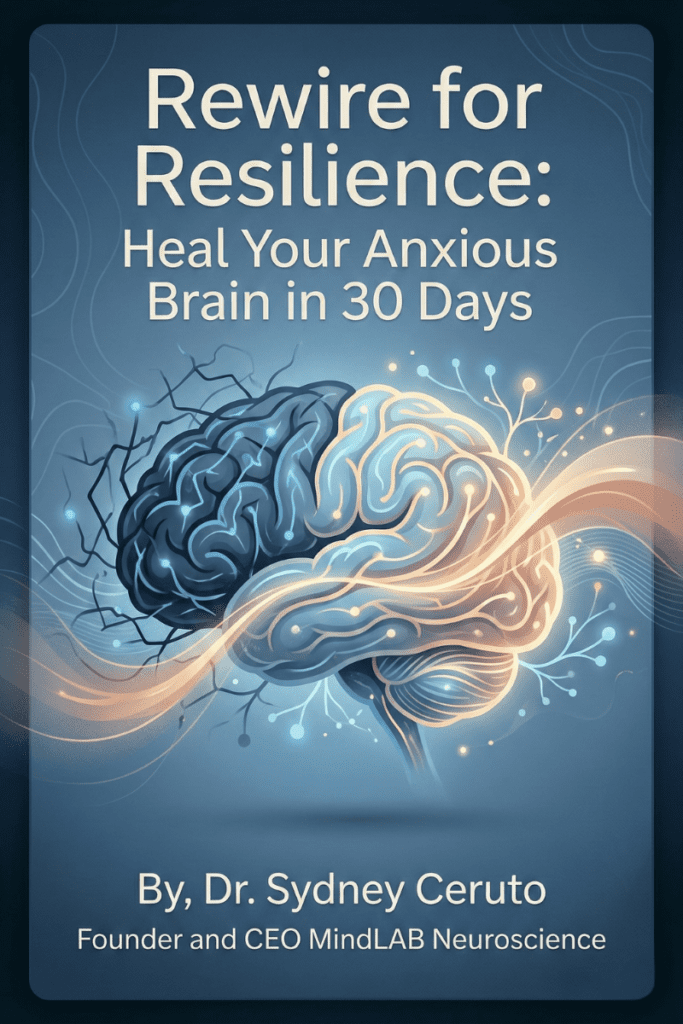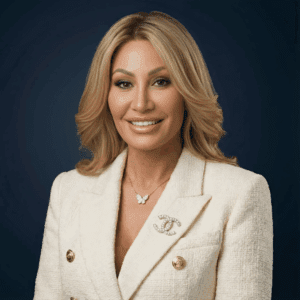Why “Just Talking About It” Doesn’t Rewire the Anxious Brain
Creative expression for anxiety works where conversation alone can’t reach. Neuroscientific findings indicate that talking primarily engages language-based regions, whereas creative activities—such as painting, sculpting, free dance, or music—activate emotional, sensory, and motor circuits. Each time a brush is put to canvas or a story is put to paper, new synaptic pathways are carved, especially in the limbic system and sensory cortex. This is critical for those who feel anxious but can’t “intellectualize” or talk their way out of distress.
Creative expression for anxiety transforms experience into color, movement, and rhythm, activating the brain’s own mechanisms for emotional processing and healing—pathways that are not engaged during ordinary verbal analysis. New research indicates that creative tasks enhance connectivity between the left and right hemispheres, building bridges between logic and feeling, speech and sensation, thereby rerouting emotional blocks rather than merely reinterpreting them. The real magic lies in the body and senses, not merely in word-based insight.
The Evolutionary Role of Creativity in Survival and Adaptation
Long before written language, creative expression was a means for ancient humans to navigate threats and uncertainty. Neuroanthropology reveals that cave paintings and communal drumming weren’t merely decorative—they were rituals for emotional regulation, threat rehearsal, and social bonding. When the mind creates, it transforms the soup of stress chemistry into organized symbols, repetitive rhythms, and safe practice for the unknown. This is evolutionary gold: chasing antelope or facing famine, creativity honed the nervous system for flexibility and survival.
Modern anxiety triggers the same circuitry, but now, creative expression redirects that threat response into constructive outlets—making meaning from confusion, beauty from chaos. Today, group art sessions, singing circles, and expressive movement all echo our ancestors’ resilience rituals. Creative expression for anxiety is less a luxury and more a biological necessity—an adaptive engine that enables species to thrive through uncertainty and adversity.
Inside the Creative Brain: Neural Pathways of Calm and Clarity
When engaging in creative expression for anxiety, the brain undergoes a fundamental transformation. Functional MRI studies reveal a decrease in amygdala reactivity—the area responsible for threat detection and panic—while the medial prefrontal cortex, which is involved in self-regulation and logic, becomes more active. The default mode network, often overactive in anxious rumination, finally quiets down, allowing the present-moment sensing to take the lead. Art, music, and movement spark the release of dopamine and serotonin, the brain’s internal “wellness pharmacy.”
This isn’t just a temporary distraction; creative tasks build new neural architecture for calm, increasing white matter density and remapping emotional memory circuits. People who regularly practice creative expression for anxiety report enhanced clarity, focus, and even improved sleep quality. Recent research also links creative flow states to increased neurotrophic factors—proteins that support neuron growth—making every creative act a step toward long-term emotional balance.
Neuroplasticity: How Art for Anxiety Literally Rewires the Brain
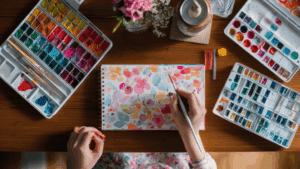
Creative expression for anxiety takes full advantage of the brain’s innate plasticity. When someone sketches, improvises music, or crafts a story, the cellular connections between emotional processing centers and higher-order thinking grow stronger. Studies indicate that persistent creative practice increases gray matter volume in the hippocampus (learning and memory) and anterior cingulate cortex (emotional regulation). This means the stress cycle isn’t just interrupted—it’s physically remodeled. People who “draw out” their fears or physically enact their inner tension experience reduced baseline anxiety and show more rapid recovery after setbacks.
Creative expression for anxiety establishes emotional “rehearsal spaces” in the brain, so when real stress hits, new response options are instantly available. Over months, fMRI scans reveal heightened connectivity, especially in women and children, highlighting the accessibility and universality of neuroplastic gains. Multiple forms—visual art, expressive writing, and movement—each offer unique neurochemical cascades, so variety is key to amplifying their effects.
Why Traditional Methods Leave People Stuck
Many individuals who struggle with chronic anxiety find that talking, analyzing, or suppressing uncomfortable thoughts doesn’t work—in fact, it can reinforce the problem by keeping the intellectual brain on high alert. Creative expression for anxiety is fundamentally different because it bypasses the “overthinking trap” and addresses root-level, embodied emotion. Instead of shaming or minimizing distress, creativity validates it—inviting curiosity, experimentation, and even play. Researchers have noted that people resistant to word-based methods flourish with sensory or movement-based expression.
Creative work generates a sense of agency and achievement, counteracting the helplessness anxiety brings. In addition, creative expression for anxiety builds emotional agility—allowing flexible responses in the face of uncertainty, where rigid analysis would falter. This makes creativity the proper antidote to the stuckness of traditional models.
Entering the Flow State: Your Brain’s Escape from Rumination
“Flow” is a neurological sweet spot where skill meets challenge, time seems to dilate, and anxiety fades. Creative expression for anxiety is a proven portal to flow: whether painting, playing an instrument, or moving freely, attention narrows, self-criticism lessens, and the brain organizes sensory input into harmony. The anterior insula plays a leading role in managing both the stress response and bodily awareness.
In flow, cortisol (the stress hormone) drops, while endorphins and anandamide (the “bliss molecule”) surge. Practicing creative expression for anxiety in micro-doses—even a few minutes daily—trains the brain to seek solutions, not spiral in fear. This state rewires rumination circuits, lowering both the frequency and intensity of anxious episodes.
How Creative Expression Boosts Emotional Literacy and Resilience
The process of creating—especially when using creative expression for anxiety as a framework—requires naming, externalizing, and transforming internal states. When an emotion is molded into clay or sung out loud, it gains form without shame. Neuroscientific studies have shown that the creative labeling of emotions alters how memories are stored, thereby reducing their ability to trigger stress in the future. Over repeated practice, this builds resilience—a set of “inner muscles” that buffer against shock, disappointment, or overwhelm.
Emotional literacy is the capacity to recognize, communicate, and adapt to feeling states, and creative expression for anxiety is one of the most effective means to foster it. As individuals craft, paint, or perform, they discover nonverbal languages that enrich everyday communication, strengthening both personal growth and social connection.
Expressive Arts as a Whole-Brain Practice for Healing
Creative expression for anxiety activates sensory, emotional, motor, and cognitive networks simultaneously—a whole-brain workout unmatched by top-down methods. Tasks like sculpting or group drumming trigger cross-hemispheric integration, helping people feel more “put together” inside rather than fragmented. The involvement of touch, sound, and movement supports sensorimotor processing and emotional discharge.
Recent imaging studies have revealed that creative activities modulate the vagus nerve, thereby lowering heart rate and stabilizing mood. This brain-body symphony is not just healing; it creates a feedback loop where emotional insight leads to further creativity, compounding neural gains. Over time, this multidimensional approach strengthens emotional immunity and offers lifelong defenses against stress.
Breaking the Cycle: Interrupting Fear with Imagination
Neuroscience shows that creating new imagery—even if purely imaginary—rewires the circuits that fuel repetitive anxiety. Creative expression for anxiety nudges the amygdala out of threat mode and into curiosity mode. Visualization, for example, isn’t just “thinking positively,” but gives the brain a fresh template for what’s possible. When people storyboard their fears or compose music inspired by stressful memories, the brain updates its interpretation of old triggers.
This capacity to “play” with reality interrupts the cycle of fear-based learning, so anxious habits dissolve naturally. Imaginative self-inquiry, trial and error, and interpretation of symbols all belong to creativity’s toolkit—a set of practices unlike any other for shifting chronic worry.
The Science of Movement and Somatic Creativity
Movement-based creative expression for anxiety—such as mindful dance, expressive yoga, or creative martial arts—is especially potent for shifting nervous system states. These activities activate proprioceptors and balance systems that recalibrate the fight-or-flight response. When the body moves creatively, it informs the brain that change is possible, fostering flexibility in all realms. Studies of trauma recovery emphasize the restorative value of movement, showing that somatic forms unlock “frozen” emotional states and release pent-up tension.
Engaging in group movement synchronizes brain waves, increases social trust, and multiplies the impact through shared mirroring. This is physical biology in action—the creative body as an agent of mind transformation.
How the Brain’s Reward System Fuels Anxiety Recovery
The brain’s dopamine-rich reward system often gets hijacked by anxiety patterns, but creative expression for anxiety offers a reclaiming. Acts like painting, singing, or writing stimulate natural pleasure circuits, releasing neurotransmitters that counteract fear and withdrawal. This sensory reward encourages positive feedback loops; the more frequently creative acts are engaged, the more the nervous system “wants” to repeat them.
Research shows that creative outlets also boost oxytocin (the bonding hormone), making expression not just satisfying but also deeply connecting—for both the self and others. The satisfaction and pride of creative accomplishment become powerful antidotes to the depletion and isolation that chronic anxiety breeds.
From Stress to Story: How Narrative Art Shapes Anxiety
Transforming anxious experience into a story—through words, images, or movement—changes both memory and expectation. Creative expression for anxiety helps individuals construct narratives that reframe challenges, assign meaning to them, and foster hope. Story-based art alters the brain’s temporal lobe activity, facilitating the integration of past, present, and future selves. The result is not just catharsis but genuine transformation of identity: anxious moments become chapters, not defining features. As narrative coherence is built, people experience renewed self-efficacy, insight, and a greater capacity to navigate adversity with agency rather than helplessness.
Practical Strategies for Daily Creative Expression
Embedding creative expression for anxiety into daily routines does not require hours or perfectionism—just commitment and openness. Begin with short, low-pressure daily exercises:
- Morning sketching to map out “worry shapes”
- Voice-recording spontaneous songs or spoken word reflections
- Mindful movement breaks emphasizing playful, childlike motion
- Found-object collages to visually rework current obstacles
- Photography walks, capturing “moments of safety and beauty”
- Mini-poetry, haiku, or story snippets to “narrate the now”
- Over time, these small practices can create significant neural and emotional changes.
Creative Environments: Designing Spaces for Change
The physical context has a significant influence on the brain’s drive for creative expression and anxiety. To boost creativity, reserve a designated space in the home or office for art supplies, musical instruments, or movement mats. Use color, scent, and tactile materials that invite sensory exploration. Allow for controlled mess and improvisation—spaces where order isn’t the aim, but experimentation is welcome. Incorporating plants, varied lighting, and even ambient soundscapes can signal to the brain that “this is your creative zone”—priming neuroplasticity and calming the anxious body.
Harnessing Technology to Amplify Creative Expression for Anxiety

In the digital age, technology has revolutionized how people can access and express themselves creatively, particularly in managing anxiety. Modern apps for digital painting, music creation, storytelling, and collaborative art platforms remove barriers to entry, making expressive outlets instantly available regardless of skill level or resources. Virtual reality environments now allow users to immerse themselves in creative worlds, engaging the senses in ways that amplify neuroplastic changes and emotional healing.
Neuroscience studies highlight how regular use of innovative technologies for anxiety strengthens motivation circuits and reduces feelings of isolation, especially when community interaction is built into the platform. By embracing digital tools, individuals can practice creative expression for anxiety anytime and anywhere, personalizing the experience and reinforcing the brain’s ability to adapt, regulate, and thrive.
Measuring Progress: What Real Change Looks Like
Transformation through creative expression is not always immediate, but it is measurable and lasting. Over time, expect to notice:
- Fewer episodes of spiraling worry
- Increased access to calm and focus during challenging moments
- Greater comfort with ambiguity and emotional complexity
- Stronger sense of accomplishment and agency
- These improvements reflect the brain’s rewiring in real-time, offering concrete feedback that the practice is effective.
Community, Sharing, and Collective Resilience
Bringing creative expression for anxiety into the community multiplies its power. In shared art-making, singing, or movement, the social brain is activated, catalyzing the activation of mirror neurons and fostering shared empathy. People report feeling “seen,” valued, and less isolated—healing often missed by solitary technique. Online creative challenges, expressive support groups, and intergenerational art-making all contribute to a culture of collective resilience, making recovery not just personal but shared and celebrated.
Expanding the Science: New Frontiers in Creative Expression for Anxiety
The field of neuroscience is constantly uncovering new frontiers in how creative expression for anxiety fosters brain health. Current research delves into how expressive pursuits affect neuroimmune pathways, suggesting that activities like group art-making and improvisational movement may lower inflammation and bolster overall health beyond emotional regulation alone. Scientists also explore the role of creative rituals—such as journaling before sleep or morning sound meditations—in priming the brain for optimal learning and recovery. As understanding grows, creative expression for anxiety is increasingly recognized not just as therapy, but as a dynamic force underlying cognitive agility and evolutionary potential. By continually expanding one’s creative repertoire, individuals don’t just reduce symptoms—they help pioneer new standards for mental and emotional well-being.
Creativity as a Lifelong Antidote to Anxiety
Creative expression for anxiety is not merely a coping mechanism—it is a transformative journey that shapes the very architecture of the mind and spirit over time. A lifelong commitment to creativity continually activates the brain’s ability to reorganize itself, leading to faster adaptation during periods of stress, uncertainty, and transition. Those who engage in creative practices for anxiety often display remarkable neurocognitive resilience, as their brains become wired to seek not just survival but growth and reinvention with each new challenge.
Engaging with creative expression to manage anxiety across the decades fosters an internal foundation of curiosity and experimentation, even in the face of adversity. Studies reveal that lifelong creativity is associated with improved executive functioning, sharper memory, and a lower incidence of age-related decline—qualities that buffer against the emotional wear and tear of modern life. The process encourages psychological flexibility, so new solutions emerge where rigid patterns once dominated. Over time, expressive routines nurture self-compassion and a capacity for joy, counteracting the inertia and pessimism that chronic anxiety can foster.
On a societal scale, communities that prioritize creative expression for anxiety demonstrate greater social cohesion, resourcefulness, and innovation. Art, music, improvisational movement, and storytelling act as collective medicine, reinforcing shared experience and collective problem-solving. Each individual’s creativity, in this sense, becomes a thread woven into the cultural fabric, sustaining communal well-being and generational healing.
Ultimately, investing in creativity is a declaration of agency—a daily reminder that anxiety need not dictate one’s narrative. With every lifelong creative act—whether small or grand—brains and communities alike are wired for optimism, resilience, and flourishing, proving that the antidote to anxiety can be genuinely created, imagined, and lived, one original moment at a time.
#creativeexpressionforanxiety #neuroplasticity #arttherapy #anxietyrelief #brainhealth #resilience #creativity #mentalwellbeing #expressivearts #stressrelief

